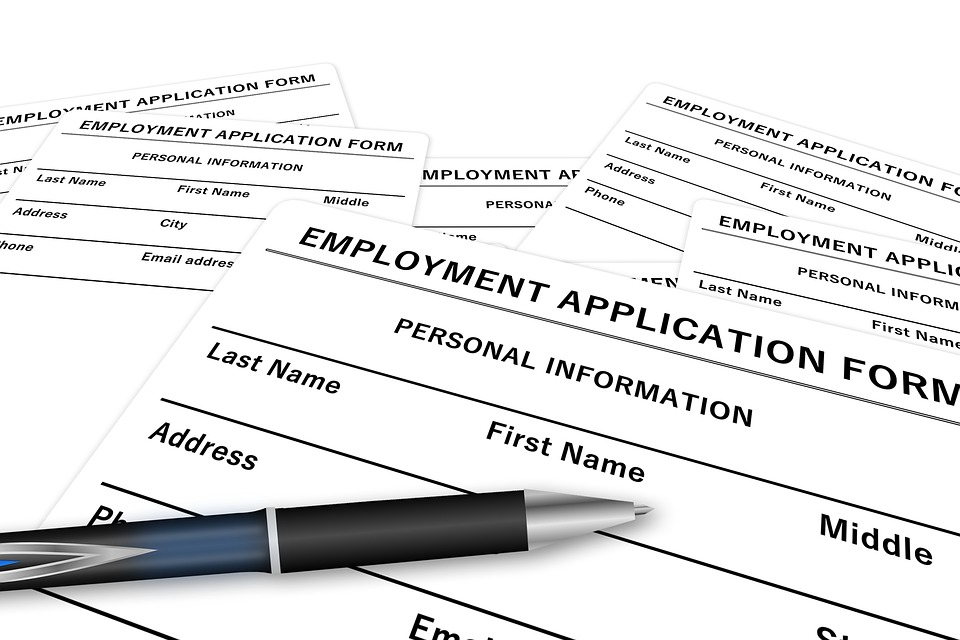 If you’re using our online damages calculator to assess what your employment case might be worth, you’ll notice that damages are adjusted by mitigation. What’s that about?
If you’re using our online damages calculator to assess what your employment case might be worth, you’ll notice that damages are adjusted by mitigation. What’s that about?
In a nutshell, the duty to mitigate damages means that you have to do two things:
- diligently and consistently look for work in your field, and
- keep a record of your efforts.
1. Look for Work
Before you can recover damages in an employment discrimination case, you have a duty to do what the law calls “mitigating damages.” Essentially, this means that you have to diligently look for replacement work so that you aren’t unnecessarily running up the damages on the company. The theory behind this is that the company, even if it did something wrong, shouldn’t be on the hook for years of lost wages while your case is pending, just because you decided to stay home and eat bonbons while waiting for your winnings. In my experience, it’s rare that people don’t mitigate their damages. Most people want to work.
Regardless, the duty to mitigate damages is something that defendant companies try to use to beat up on former employees in court. Expect them to try the same on you. “Oh, yeah? Well, we may have messed up, but what have you done to MITIGATE DAMAGES? Huh? How many jobs have you applied for? Do you have evidence? When did you send your résumé? Did you go to an interview? Did you get the job? Why not? How about the next one? When did you apply for that job?” And so forth.
When a case makes it to a jury trial, defense counsel love to play this card. At least some of the members of the jury, or maybe even all of them, have experienced unfair treatment at work themselves. And while they may want to punish an employer’s discriminatory actions, they won’t take kindly to a former employee who looks like he or she wasn’t doing everything possible to get life back on track quickly.
But You Don’t Have to Take Just Any Job
The duty to mitigate damages does not mean that you have to take the first job that comes along. You also do not have to take a job that is fundamentally different from what you were doing before you were wrongfully terminated. For example, a former senior vice president doesn’t have to start flipping burgers at a fast food joint to meet her burden of mitigating damages. But you cannot be overly picky or hold out for a “perfect” job or even a job that pays as much as you were making before.
2. Document Your Job Search
 Here’s a pro tip for you. Use your mitigation of damages to your advantage. You can do this by keeping notes and supporting documents throughout your job search. Those notes will allow you to turn the tables on defense counsel if they try to play the mitigation card at trial. If you keep great notes, the hypothetical conversation above might instead go like this:
Here’s a pro tip for you. Use your mitigation of damages to your advantage. You can do this by keeping notes and supporting documents throughout your job search. Those notes will allow you to turn the tables on defense counsel if they try to play the mitigation card at trial. If you keep great notes, the hypothetical conversation above might instead go like this:
Defense: Oh, yeah? Well, you’re accusing us of wrongdoing, but what have you done to MITIGATE DAMAGES? Huh? Huh?
You: Of course, Mr. Defense Counsel. Within a week after your client fired me, I was sending out résumés and networking almost every spare moment.
Defense: How many jobs did you apply for? Do you have any evidence?
You: Certainly. Let’s look at that spreadsheet I gave to you in discovery. I think it was about 20 pages long. It shows here that I applied for 67 jobs in the 10 months after being fired before I got the one I have now, which pays me 20% less than I was making …
Defense: Ok, fine. You can stop now. When did you send this first résumé?
You: Looking at the chart, I applied to that first job on Friday the 25th at 3:42 p.m. by submitting an application through the company’s web portal. It turns out that you rarely can get to a live person these days. I took a screenshot of my application and sent it to you. Do you want to see that?
Defense: No. Remember, I’m asking the questions here. Did you interview? Did you get the job? Why not?
You: Looking at the chart again, I see that I did get an interview, after I actually ran into the hiring officer that week at one of the four networking events I went to, but I did not get the job because my former employer, your client, gave me a negative review.
And so forth and so on. What’s the jury thinking about you now? You just scored major points in your column!
Here’s another important tip: if you’re keeping a log of your job search efforts, be careful what you write. The defense will be entitled to get a copy of your log—and you’ll want them to have it. But you have to give the whole thing to them. So don’t write anything you don’t want to see again in open court.
Summing It Up
Before you can recover damages in an employment discrimination case, you have a duty to do what the law calls mitigate your damages. This means you have to look for a new job and keep a record of your efforts.
If you’re considering filing a claim in court and you want to know what it might be worth, our online damages calculator can help you estimate your recoverable damages. Remember, though, that you have an immediate duty to limit or mitigate your damages by consistently looking for replacement work and keeping accurate records of all your job search efforts. Need more help? Contact us to talk to an attorney about your case!





